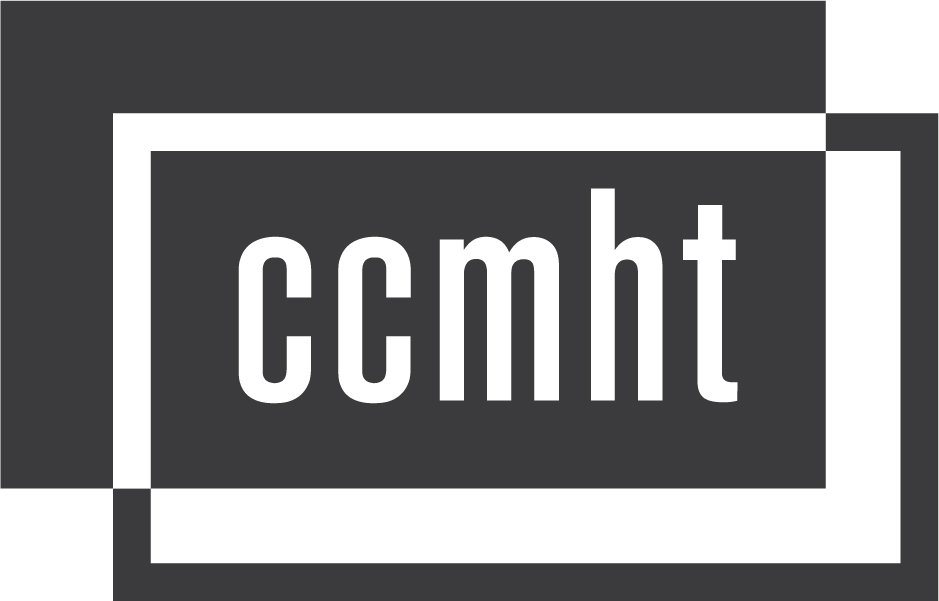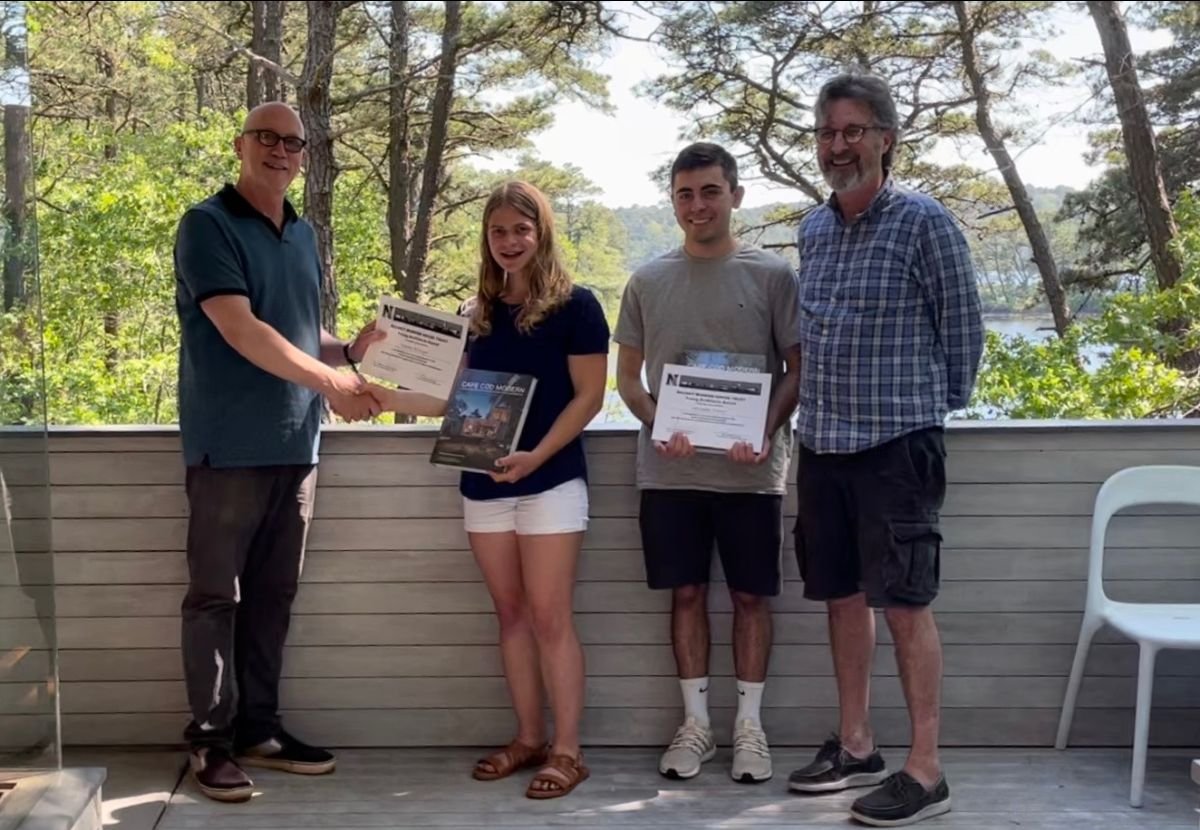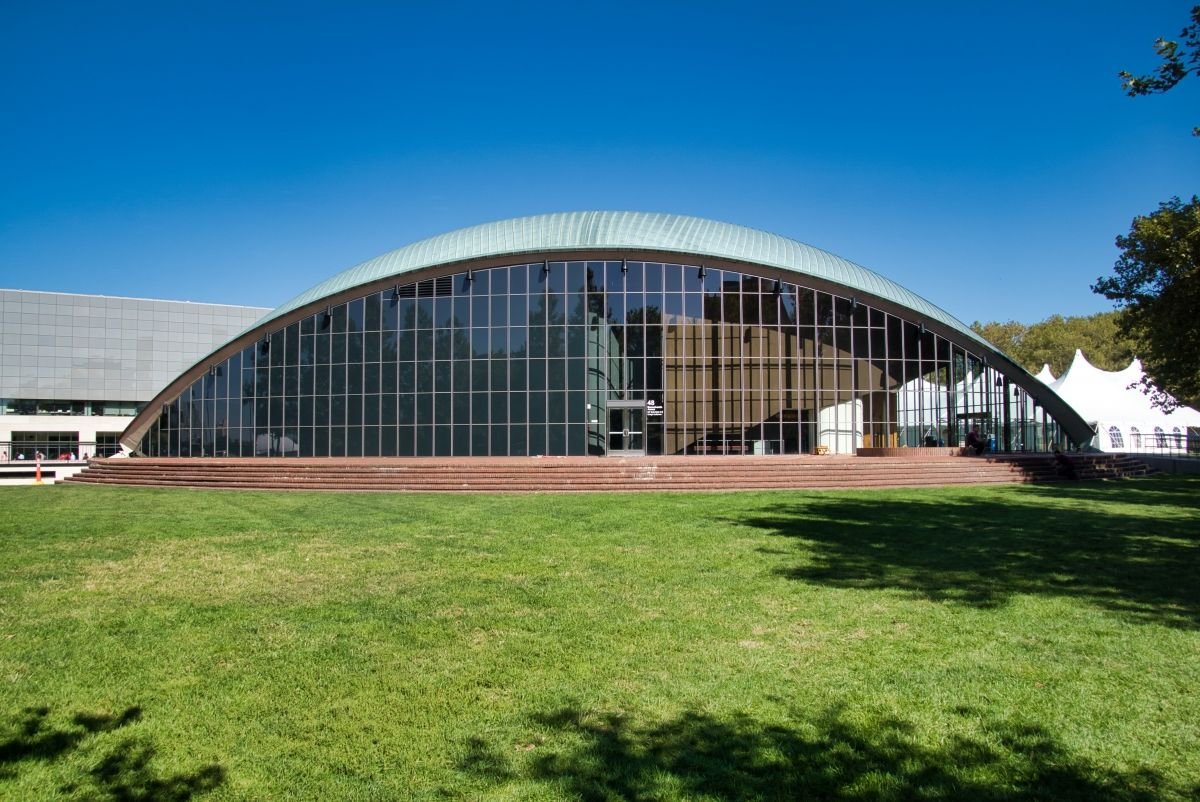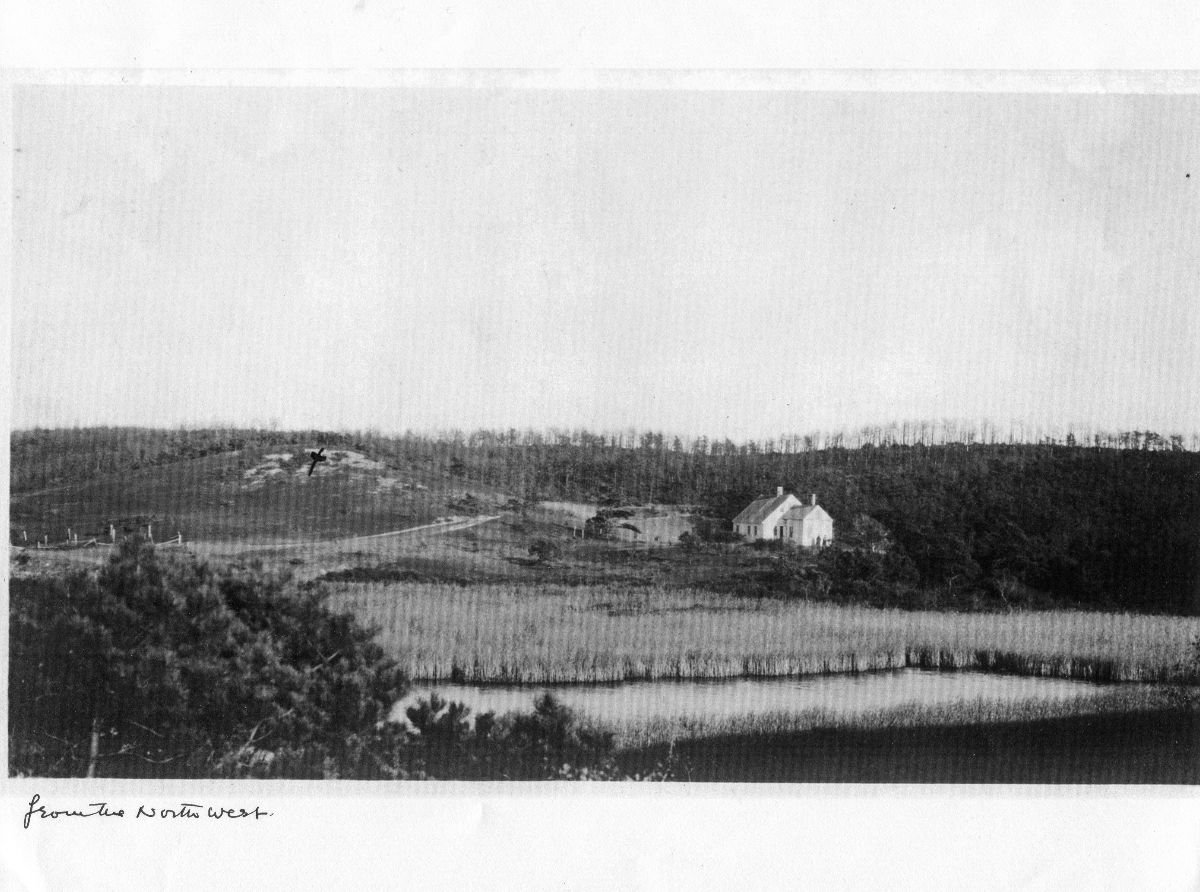News and Events: Late Summer 2021
Peter McMahon, Rachel Pranga, Sal Ochoa and Richard Tichnor
Young Architects Award 2021
Our Award recipients, Rachel Pranga and Salvador Ochoa, received their awards in an impromptu ceremony in June on the deck of the Kugel Gips house joined by their families and design teacher from Nauset High School, Richard Tichnor.
Both of the new graduates are planning further study in design: Rachel at U. Mass Amherst in Landscape Architecture and Sustainable Design
and Sal in Civil Engineering at Boise State University
Award winners receive a $500 scholarship from CCMHT and a singed copy of Cape Cod Modern
Mass Modernism Tour
Docomomo, the international modernism preservation group, is hosting a tour from Sept 29th through October 6th including Boston, Cambridge, the Cape and the South Shore.
There is an option to just attend for the Cape leg of this journey which will include some very seldom seen gems. CCMHT is helping organize and Founding Director Peter McMahon will be on hand.
Note: Before European settlement the island was occupied intensively by Native people for millennia as evidenced by the large midden pile and many stone tools and artifacts found near by.
For more info and registration go to:
Event Page: https://docomomo-us.org/event/travel-tour-mass-modernism-2021
Brochure: https://docomomo-us.org/resource/files%2F5lvjhstkt31nbp6.pdf
Registration link: https://docomomous.app.neoncrm.com/np/clients/docomomous/eventRegistration.jsp?event=275
On Hatch House Land:
Search for the Cellar Hole of the 1840s Hopkins House
If you are familiar with the Hatch House you may have noticed a depression in the earth just beyond the garden. This is the hole left by a traditional cylindrical brick cellar belonging to an old Cape cottage. The following is a piece written by Sharon Dunn, a poet and resident of Bound Brook Island.
Note: Before European settlement the island was occupied intensively by Native people for millennium, as evidenced by the large midden pile and many stone tools and artifacts found near by.
An 1848 map, Barnstable County real estate records and the serendipity of memory helped locate the cellar hole of the Thomas Hopkins House—on land which is the site of the Hatch House on Bound Brook Island in Wellfleet. Thomas Hopkins was son of one of the original Island settlers and a direct descendant of Constance Hopkins, who sailed on the Mayflower.
The cellar hole is to the left of the path that ascends from the Bay beach to the iconic Hatch House, now managed by the Cape Cod Modern House Trust. The cellar hole, all that is left of the Hopkins House, lies in a wooded thicket, with locust trees, poison ivy, rosa rugosa, Virginia creeper and much more.
The Hatch House appears in the upper right, and the thicket obscuring the Hopkins cellar hole is to the left.
While the Hatch House, designed by Jack Hall and built in 1960, faces southwest, the Hopkins House built in the 1840s faced north/south as all Cape houses did. The north/south placement was a matter of tradition and time- keeping...sun pouring through south windows helped keep the time. The Hopkins House was a three-quarter Cape, with one window on one side of the door and two on the other side. The house had a small annex to the west.
The Hopkins House faced south. The Hatch House was built almost directly south of the Hopkins house cellar hole, just up the hill.
What happened to the Hopkins House? It was moved into Wellfleet village sometime after 1870. Most Bound Brook Island houses were relocated after the 1850s because the Island’s vital harbor, Duck Harbor, silted and duned up and could no longer provide access to the Bay, to set out to make a living by fishing or to travel. Over twenty houses were moved off-Island and are scattered throughout Wellfleet. The houses were disassembled (‘flaked’) and moved to town by oxen or by water.
Captain Thomas Hopkins, born in 1814, lived in this house in two different spans of time—in his mid-twenties and again twenty years later. In his mid- twenties he lived there with his wife Hope Hamblin and two of his younger brothers, all three men going to sea. The house had been built for them after 1840 by Truro carpenter Zacheus Rich for a tragic reason: the original Hopkins homestead burned to the ground.
The Hopkins had been among the original settlers on Bound Brook Island in the late 1700s, and their original home was located on the far north of the Island in Truro. Thomas, eldest son of seven children born the Truro house, was eleven when his father died at sea in 1825, and he became head of the family at nineteen in 1833 when his mother died. His three sisters married and moved out of the home, as did one brother; Thomas remained in the homestead in Truro with his wife Hope and brothers Richard and Elisha, as documented by the 1840 U.S. Census for Truro. It’s believed that sometimeafter 1840, a fire destroyed the entire Truro homestead leaving the four Hopkins homeless until the new Hopkins House was built in a more southerly spot over the town line in the Wellfleet part of the Island.
By 1850 Thomas, by then an experienced sea captain and part owner of River Wharf, settled his growing family off-Island, first near his wealthy Hamblin in- laws, then for a stint as a lumber dealer near Boston, which ended when Hope died in 1856. Thomas returned to Wellfleet with his children, married Hannah Rich of Truro and settled on southeastern Bound Brook Island in a house near Thomas Atwood’s. What we now call the Hopkins House was rented out to various parties from 1848 until 1858, and Thomas’ brother Richard and his wife were living there in 1860. When Richard died two years later, Thomas moved his family of eight into the three-quarter Cape, and his children continued to attend the Island school.
Island families were close. In 1861 Thomas’ daughter Martha had married Lorenzo Dow Baker, who was to become Wellfleet’s famed banana entrepreneur – their families lived less than a mile from each other on the Island.
However, more and more families moved off-Island for good. So too, Thomas Hopkins, who purchased land in town, and by 1870 or so he moved the Hopkins House, likely floating it to Wellfleet, where it still resides on Baker Avenue.
The site of the Hopkins House seemed uncertain for years. However, Barnstable County records show a direct line of sale of land from Thomas Hopkins to Joshua Baker, then from Joshua’s heir Lorenzo Dow Baker II to Robert Hatch.
Also the 1848 U.S. Coast Guard Survey map shows the 1840s Hopkins House. On the following enlargement from that map, the Hopkins house is marked and the 1960 Hatch House is represented by an H. (The dark barred structures on two sides of a body of water to the northwest are salt works to produce salt to preserve fish.)
Gilly Hatch, daughter of Robert and Ruth Hatch who owned the House until the 1990s, reports knowing that the cellar hole was in this location, as does a Wellfleet oysterman, who used to roam all of Bound Brook Island as a boy exploring cellar holes and Native American sites.
The small three-quarter Cape moved to Baker Avenue has been added onto in most all directions over the years, as was the custom of thrifty Cape Codders, who repurposed precious wood to increase living space. And it is still owned by Hopkins descendants.
Sharon Dunn is writing a book about Bound Brook Island called An Island in Time. The Spring 2021 issue of the Cape Cod Poetry Review has nine of her Bound Brook Island poems.







